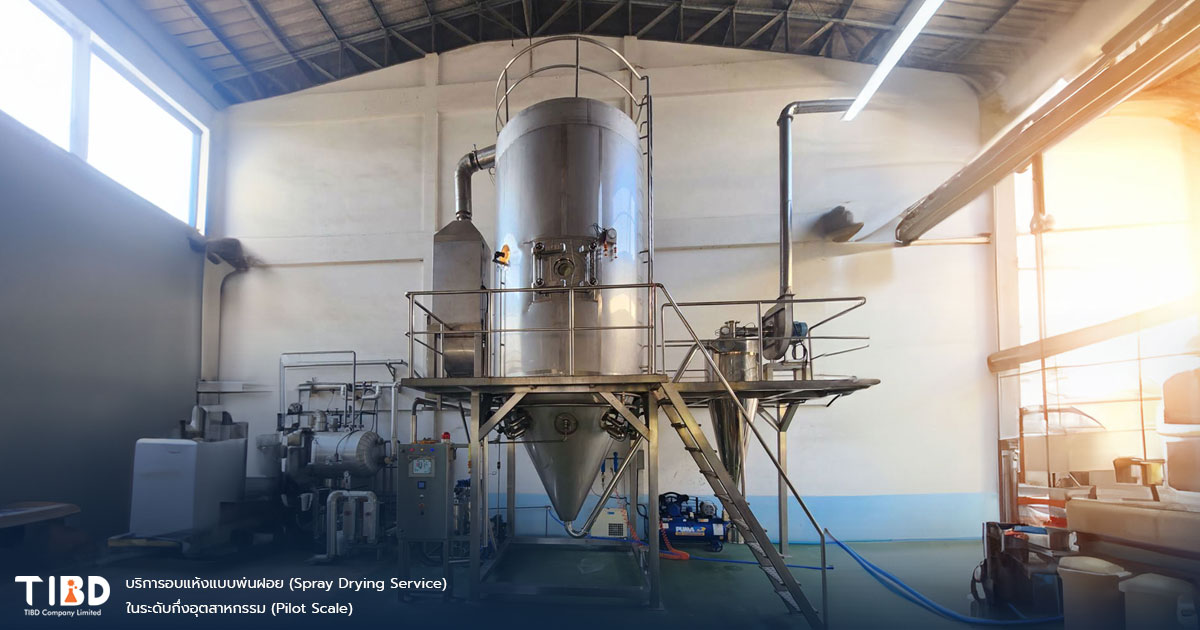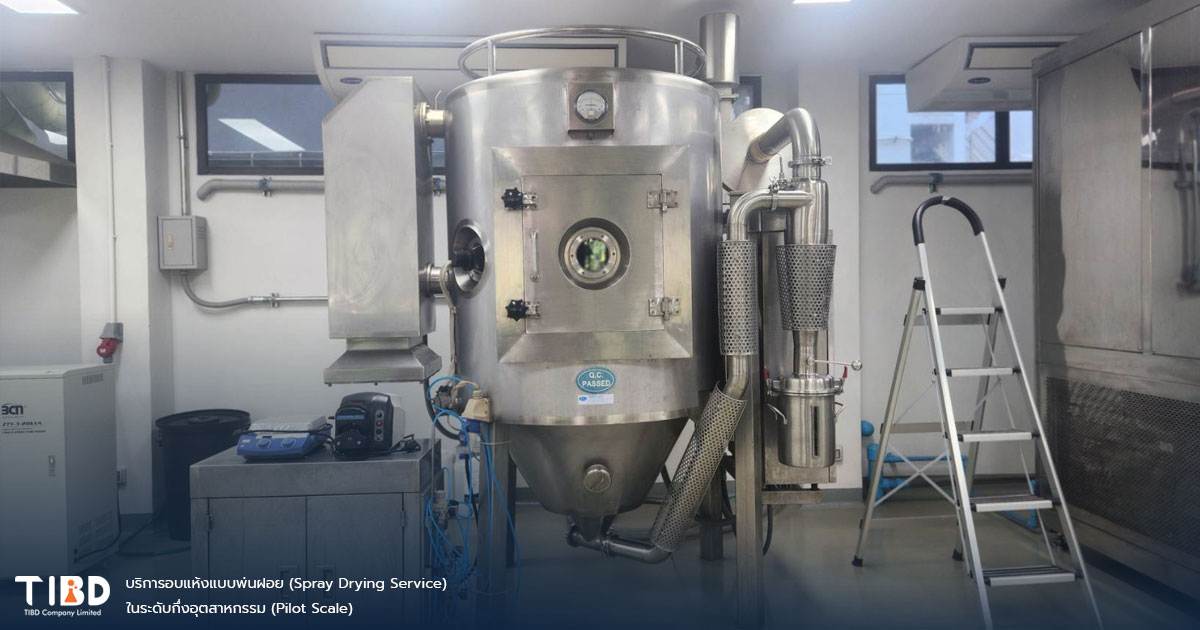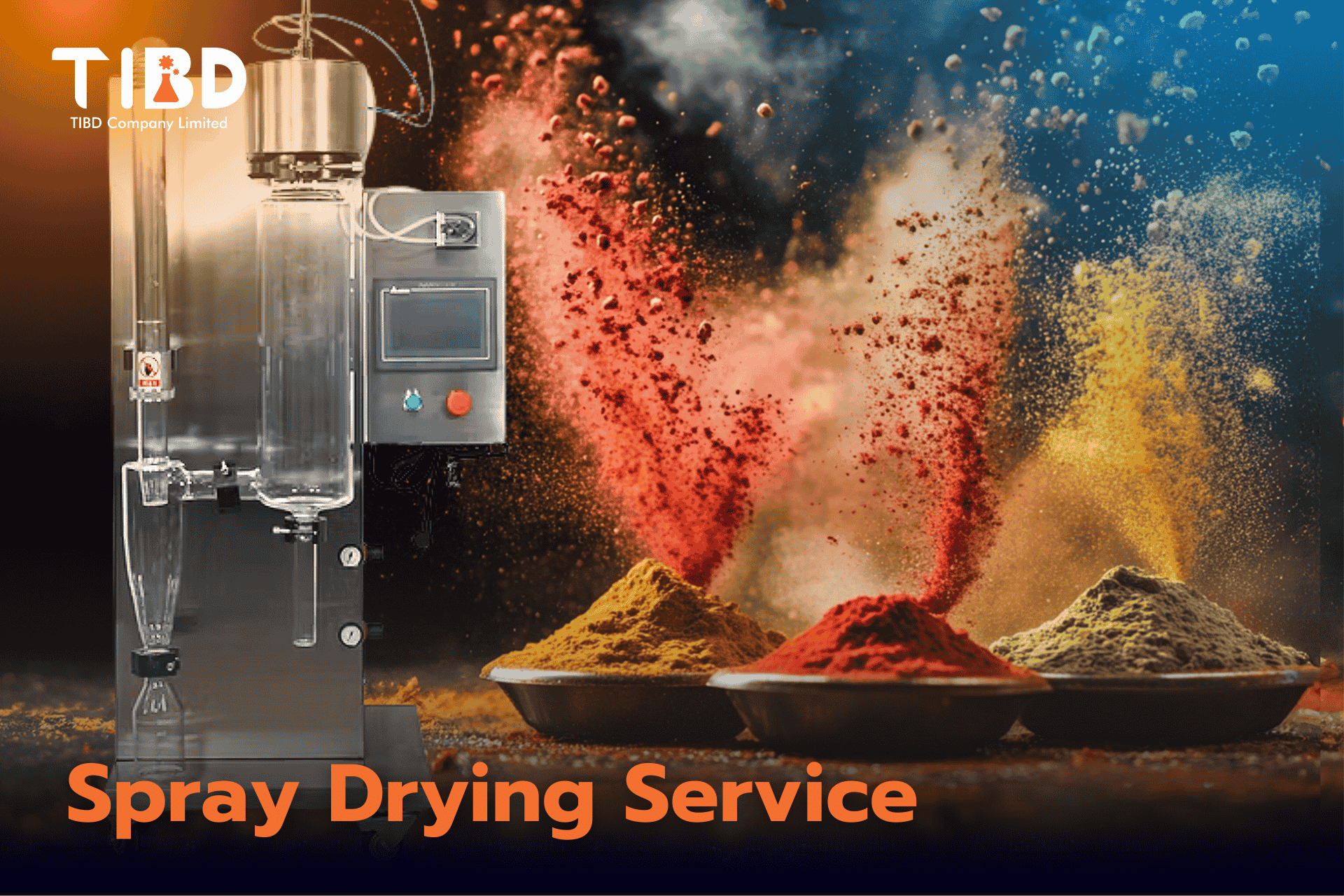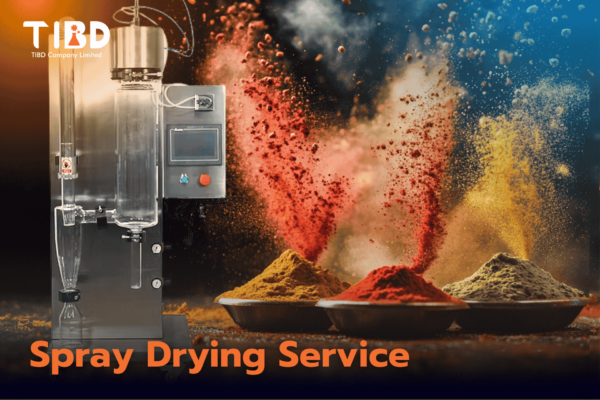Spray Drying Service
Elevate Your Extracts into Powdered Products for Commercial Success
In recent years, health, beauty, and supplement industries have expanded rapidly as consumers seek natural ingredients—particularly those rich in bioactive compounds—that maintain their potency. From cosmetic brands focusing on herbal components to supplement makers requiring a variety of biologically active extracts, the common thread among these businesses is the need for long-lasting extracts in a form that seamlessly integrates into various product types. One of the most pivotal technologies in this stage is spray drying, which efficiently transforms liquid solutions or extracts into stable, dried powders while minimizing the risk of heat-induced compound degradation.
For new brand owners, community enterprises, and businesses aiming to raise their product standards and compete effectively, Spray Drying Service is an attractive choice. Not only does it eliminate the need to invest in large, expensive machinery, but it also offers expert support in adapting the drying process to suit each unique extract. The result: a high-quality powdered extract ready for commercialization.
What is Spray Drying?
Spray drying is the process of hot-air drying a solution or suspension by spraying it into a drying chamber. High-temperature air circulates within the chamber, causing the water or liquid to evaporate almost instantly upon contact, leaving behind the solid powder (the key compounds). Because the material is exposed to heat for just fractions of a second, heat-sensitive molecules are less likely to degrade.

Main Stages of Spray Drying
- Feed Preparation
- Confirm the extract’s concentration, ratios, and viscosity.
- Optionally add carrier agents such as maltodextrin to stabilize the extract and prevent clumping.
- Atomization
- The liquid is pumped through a nozzle or rotary atomizer, creating fine droplets.
- The smaller the droplets, the faster the spray drying because of increased surface area exposure to hot air.
- Drying
- The droplets enter the drying chamber, coming into contact with circulating hot air.
- Moisture evaporates rapidly, leaving low-moisture powder particles.
- Powder Collection
- The powder separates from the hot air using a cyclone or filtration system, collecting in a chamber below.
- This results in fine, uniformly sized powder that is easy to mix or dissolve.
Advantages of Spray Drying Service
- Preserving Sensitive Compounds
- Minimal heat exposure time prevents degradation of vitamins, enzymes, antioxidants, and other sensitive compounds.
- Carrier agents help stabilize the extract and reduce clumping or deterioration.
- Powdered Format for Convenience
- Spray-dried powders are fine and uniform, making them easy to incorporate into other formulations (cosmetics, supplements, etc.).
- Applicable across industries—from skincare and nutraceuticals to beverages and functional foods.
- Extended Shelf Life
- Reduced moisture content lowers the risk of microbial growth and spoilage.
- Powder form conserves storage space and enhances transport efficiency.
- Quality Control Simplification
- Spray dryers allow precise control over temperature, airflow, and feed rate.
- Mostly an enclosed system, minimizing contamination risks.
- Suitable for Small to Medium Production
- You can produce smaller batches, ideal for market tests or new formula trials.
- Commercial spray drying service providers often have lab-scale and pilot-scale machines to accommodate diverse needs.
Why Opt for a Professional Spray Drying Service?

Cost and Time Savings
- Acquiring, installing, and maintaining spray drying equipment is expensive. Smaller businesses can leverage specialized providers without heavy capital investment.
- Skilled technicians manage feed prep and quality control, eliminating steep learning curves and possible errors.

Expert Guidance
- Every extract has unique characteristics, such as viscosity, thermal sensitivity, and active compound profiles.
- Professionals fine-tune variables—like inlet and outlet temperatures, feed rate, and carrier type—to minimize raw material loss and preserve desired properties.

Reduced Raw Material Loss
- Farmers’ cooperatives and communities with seasonal produce—fruits, vegetables, or local herbs—can convert their materials into powdered extracts via spray drying, making them usable year-round.
- Increases income potential and provides a standardized product for both domestic and international markets.

Easier Shipping and Storage
- Liquid extracts can spoil or settle during long-term storage or transport, but dry powders maintain consistency for months or even years.
- Powder form also allows simpler packaging and more accurate active ingredient measurements.
The Spray Drying Workflow by Specialized Teams
Consultation
- Provide details on your extract, final product goals, concentrate levels, and anticipated production volume.
- Experts assess heat sensitivity, pH, viscosity, and overall feasibility.
Feed Preparation
- Adjust extract concentration or dilution; add carrier agents to enhance stability and achieve specific powder traits (e.g., water solubility).
- Check viscosity, pH, and total solids to confirm smooth atomization.
Trial Run (Lab Scale)
- Test small batches to determine optimal parameters—like air inlet/outlet temperatures.
- Evaluate powder attributes such as color, aroma, flavor, water solubility, and remaining active compounds.
Quality Control & Analysis
- Post-drying, the powder undergoes physical and chemical checks (moisture content, solubility, active compound levels, microbial contamination).
- Tweak conditions or carrier ratios if results deviate from desired standards.
Production Run
- Execute pilot-scale or larger-scale drying sessions based on agreed quantities and validated parameters.
- Control temperature, humidity, and airflow carefully, monitoring feed flow throughout the process.
Packaging & Delivery
- The final powder is placed in airtight or foil packaging to prevent moisture ingress.
- Delivered with Certificates of Analysis or Test Reports verifying quality.
Spray-Dried Extracts for Professional Brand Building
With spray-dried extracts in powder form, businesses can develop multiple product lines:
- Cosmetics: Creams, serums, lotions, or masks where active ingredients readily absorb into the skin.
- Food Supplements: Capsules, herbal teas, instant beverage powders, or overall health products.
- Flavor Enhancers or Herbal Additions: For the food industry—seasoning powders, functional beverage mixes, etc.
- Value Addition to Local Produce: Convert seasonal fruits or vegetables into long-lasting powdered extracts for year-round use.
All these innovations empower brand owners to either diversify their product portfolio or target niche markets that demand natural extracts. A reputable spray drying service with extensive lab facilities and testing equipment further boosts a brand’s credibility, enabling straightforward entry into global markets.
“Spray dryers” and “spray drying” play a pivotal role in industries where natural extracts are a key selling point—be it cosmetics, dietary supplements, health foods, or processed agricultural goods. Spray drying keeps extracts in a high-quality powder form that is easily stored, used, and shipped with minimal quality risks. For new entrepreneurs and community businesses, using a professional spray drying service is especially beneficial, avoiding the high costs of equipment and gaining technical support in fine-tuning processes for commercial viability.
Once you have a spray-dried extract, you can integrate it as an active ingredient in cosmetics, supplements, beverages, or any product seeking added value and efficacy from natural compounds. This hot-air drying method also establishes consistency and reduces raw material waste, making products more suitable for export due to easier transportation and lower risks of spoilage.
If you’re a new brand owner, community enterprise, or business looking to add value to natural extracts or develop stable powder-based products, contact us for guidance on spray drying services and spray dryer equipment. Click here to get started!





